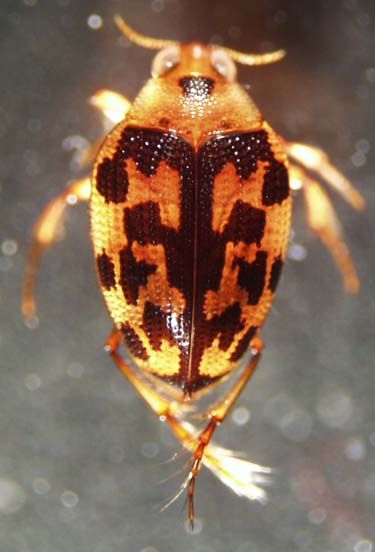
THE XERCES SOCIETY FOR INVERTEBRATE CONSERVATION Aquatic Invertebrates in Pacific Northwest Freshwater Wetlands |
| Identify taxa |
Many aquatic beetles are benthic, lliving on or in the substrate. Others, such as adult whirligig (Gyrinidae) or predaceious diving beetles ( Dytiscidae) swim within the water column or on the water surface. The most commonly encountered Coleoptera in Pacific Northwest wetlands are Dytiscidae, Haliplidae (crawling water beetles) and Hydrophilidae (water scavenger beetles). Some families, such as riffle beetles (Elmidae) and long-toed water beetles (Dryopidae) do not regularly inhabit wetlands because they prefer faster moving waters. As with the rest of this guide, the focus of the beetle section is on the taxa most likely to be found in wetlands, but taxa less likely to be found are also included, in separate links. Most of us see beetles such as lady bugs, June bugs, and ground beetles on a regular basis, and are familiar with the general appearance of an adult beetle. However, all Coleoptera go through complete metamorphosis, with a very different-looking larval form that pupates and emerges as the more easily recognized adult. Adult aquatic beetles share many of the features we identify with beetles in our daily lives and are fairly recognizable. Beetle larvae, on the other hand, are usually much more cryptic and hidden from view, so you may not be as familiar with them. If you ever bought mealworms from a pet store, you'll have a head start on recognizing aquatic beetle larvae when you come across them!
|
|||
| Adult beetles Forewings modified into hard shield-like structures (elytra); meet at the center of the body and usually cover entire abdomen. Antennae may be long or short, but with at least 4 segments, usually 6 or more. Tarsi with at least 3 segments. |
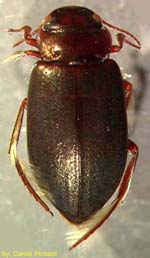 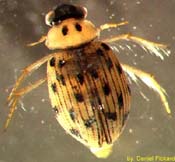 |
||
| Immature beetles No wings or wing pads; usually three pairs of legs on thorax; head often tough and hardened; most lack long tails or projections from the sides of the abdomen, though some have plates or filaments at the side of ther abdomen. Antennae with 3 or fewer segments. Tarsi with single segment. |
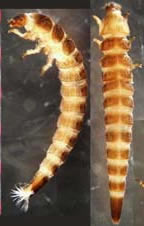 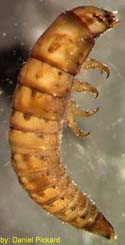 |
||
Family list: |
© 2007 Xerces Society
Contact info@xerces.org
